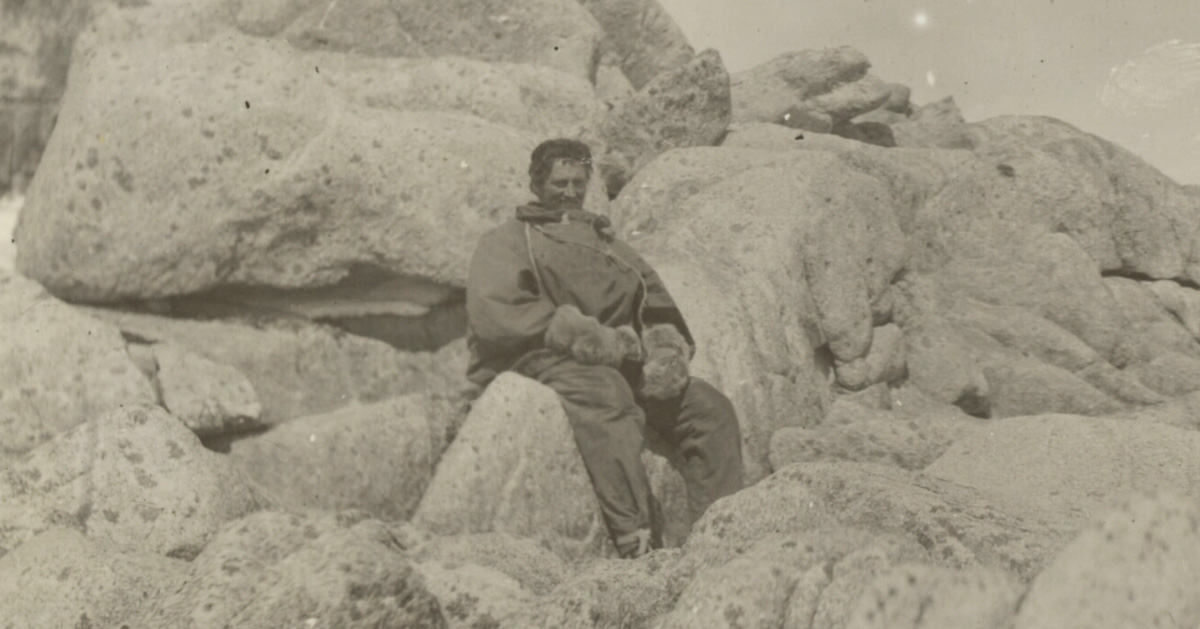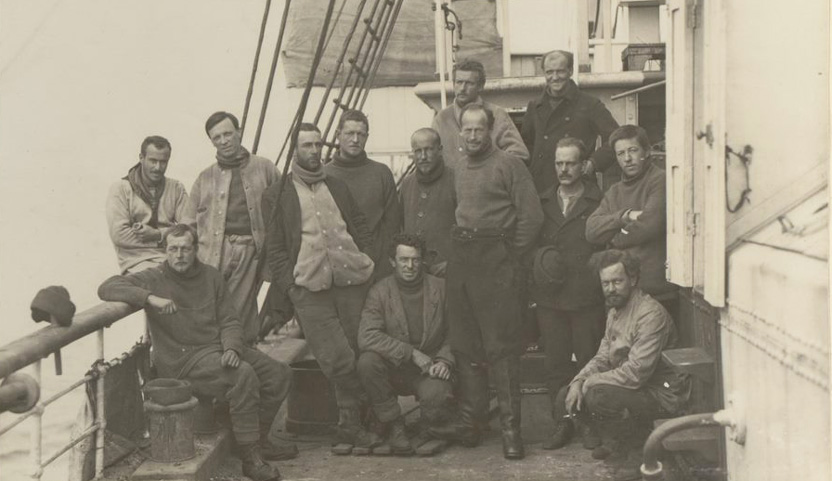
Rare manuscripts and photographs documenting early Australian exploration of Antarctica and its connection to developments in geology and mineralogy have been digitised as part of an ongoing collaborative project between the Australian Academy of Science and the National Library of Australia.
The material consists of a small collection of photographs and illustrations depicting the British Antarctic (Nimrod) Expedition 1907–09 led by Sir Ernest Shackelton and the ill-fated Terra Nova Expedition 1910–13 led by Captain Robert Scott, and the larger Stillwell collection covering the first and most famous of Australian polar exploration missions.
Frank Stillwell OBE FAA (1888–1963) was only 23 when Sir Douglas Mawson invited him to join the Australasian Antarctic Expedition (AAE). The expedition was primarily a scientific and geographic venture, and Stillwell was one of three geologists to make the journey.
The party sailed from Hobart to Antarctica aboard the Aurora in December 1911 and established their Main Base at Cape Denison on the shore of Commonwealth Bay, Adelie Land – an especially remote part of the Antarctic coast. Stillwell and his companions spent the next 17 months in what has since been described as a ‘river of wind’ with gusts of up to 200 miles per hour recorded – the blizzards were almost constant.
The Frank Stillwell Collection in the Academy’s archives includes fragile diaries, field journals, notes and photographs from his time in Antarctica. An otherwise intensely private man, Stillwell was conscientious about his diaries. He records the expedition’s scientific success, their coastal and inland journeys, and his observations of the region’s geography, geology, meteorology and magnetism. Stillwell’s papers paint a picture of everyday life at Main Base, the expedition’s absolute preoccupation with the wind – ‘a blizzard roar in our ears’ – the complete lack of privacy and the importance of shared meals in maintaining social cohesion. He fills gaps in Mawson’s published record, particularly from mid-December 1911 until the end of February 1912, when Mawson’s diary is almost empty.
Stillwell’s diaries and field journals cover the Spring and Summer of 1912 when six expedition parties set out on journeys of varying lengths. Stillwell led two shorter field trips along the coast of Commonwealth Bay while Mawson’s famed Far Eastern Shore Party began their far riskier journey to survey glaciers east of Cape Denison. Here he began his study of metamorphic differentiation to explain the contrasting mineral assemblages which formed during metamorphism from the initially uniform parent rocks of Adelie Land. This remains a widely accepted concept that improved our understanding of how minerals, including ore minerals, are formed.
These trips were perilous, and Stillwell writes of coming close to death due to carbon monoxide poisoning one night in December 1912. He records his safe return to Main Base in January 1913 and his joy at seeing the expedition’s ship Aurora return for them – ‘Excitement, news, bustles, once more the outside world…The saints could never be more happy – and creeping fear as days pass without the arrival of Mawson and his party’.
Mawson eventually made it back to base after a harrowing journey, sadly without his companions, Lieutenant Belgrave Ninnis and Swiss mountaineer Xavier Mertz, who had perished. He was just in time to see the Aurora on the horizon, returning to Australia. Six men had stayed behind to search for the missing party and remained with Mawson another ten months until the ship could return. Stillwell was not among them.

Frank Stillwell never returned to Antarctica. He lectured in mineralogy and petrology at the University of Adelaide in 1914, then dedicated himself to the analysis of the geological collections of the Australasian Antarctic Expedition. His papers trace the development of his study in The Metamorphic Rocks of Adelie Land, which was published in the AAE Reports and earned him a University of Melbourne DSc in 1916.
The Academy’s Stillwell collection covers virtually his entire career, beginning with student work and ending with Stillwell - a world-leading authority in ore mineralogy. Records document his post-Antarctic research into the lead-zinc-silver ores found at Broken Hill, New South Wales, the gold reefs at Bendigo, Victoria and the remapping of Western Australian gold deposits that resulted in the revival of the Kalgoorlie field. This inspired Stillwell’s later work with telluride ore minerals and prompted his travel to study mining operations in Europe, Africa and North America in 1922 and 1923. This overseas travel brought to his attention the emerging field of mineragraphy, the study of opaque minerals – particularly ore minerals – under the reflecting microscope, that would occupy the rest of his career.
The collection shows Stillwell was withdrawn from military service during World War I to assist in the development of the Commonwealth Advisory Council of Science and Industry and his subsequent Research Fellowship at the University of Melbourne, where his investigation into Australian ores led to his appointment as Research Petrologist and later head of the Mineragraphic Section at the newly formed Council of Scientific and Industrial Research, a predecessor of CSIRO. Stillwell and his team investigated nearly every major ore deposit in Australia, including the urgent but ultimately futile exploration of uranium at Mt Painter, South Australia, for potential use in allied nuclear weapons projects in 1944.
The Stillwell collection is also unexpectedly rich in social history, with maps and photographs documenting life and industry in small mining towns across Australia. It touches on the decades Stillwell spent teaching mineralogy at the University of Melbourne alongside his work at CSIR, and his extensive correspondence with others in his field shows how science and industry intersected in the early to mid-twentieth century. Records touch on the profound influence of Stillwell’s time in Antarctica on the rest of his career and his lifelong friendships with other expedition members. Letters found elsewhere in the Academy’s archives reveal that Douglas Mawson was behind Stillwell’s nomination to the Australian Academy of Science, where he was elected a Fellow in 1954.
The Frank Stillwell Collection is now freely accessible via Trove and the Academy online catalogue.
To learn more about Stillwell, see Still no Mawson, a transcription and annotation of his Antarctic diaries edited by Bernadette Hince, and read the biographical memoir by E. S. Hill.
The Academy thanks philanthropist Mr David Anstice, whose support made digitising these collections possible. If you would like more information about supporting the archive digitisation project, please contact our Philanthropy Manager at philanthropy@science.org.au.
© 2025 Australian Academy of Science